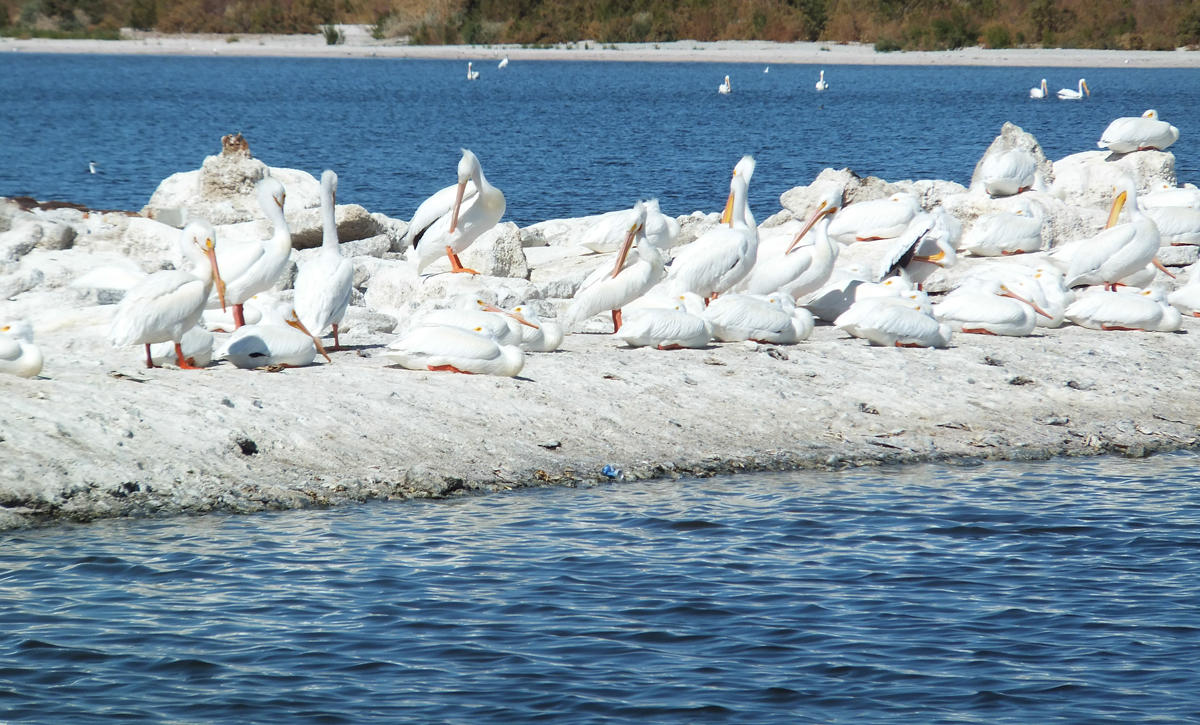
Audubon California, Defenders of Wildlife, Pacific Institute, and Sierra Club today celebrated the release of the state of California’s 10-year plan to address the ongoing crisis at the Salton Sea. The groups are committed to working with state officials as they build on the plan to address the fallout from tens of thousands of acres of exposed playa that will result from water diversions beginning next year.
“This is a promising step forward at the Salton Sea, but there is still much more to do,” said Kim Delfino, Defenders of Wildlife’s California program director. “The state needs substantially more funding to build and operate dust control and habitat projects. We need a clear commitment not just in words but also in actions to provide habitat for migratory birds and to protect public health.”
State officials are under pressure to meet their commitment to address habitat loss and dust-related public health problems that will arise beginning in 2018 when the Salton Sea will start to receive significantly less water, eventually up to 40 percent less. The shrinking sea will expose shoreline destroying tens of thousands of acres of habitat and kicking up massive dust storms.
“While the plan briefly discusses outreach, the State and other stakeholders must work harder to provide community members with the information they need to understand what is happening at the Salton Sea and how they can contribute to the solution,” said Frank Ruiz, Audubon California’s Salton Sea Director. “Only with full engagement of the community will the crisis be elevated to the statewide attention it deserves.”
"This is a welcome and necessary step forward for the Salton Sea. The challenge now is to turn words into projects on the ground, and to ensure that protecting the valuable habitats at the Sea are not lost as the State seeks to save money," said Michael Cohen, Senior Research Associate at the Pacific Institute.
"The 10 Year Plan for the Salton Sea is a real step forward for the State of California--and one that could not come soon enough with sharp declines in water coming in less than 10 months,” said Sarah Friedman, senior campaign representative with the Sierra Club’s Beyond Coal Campaign. “Now we need to work together to fund the projects that benefit the local communities suffering from some of the worst air in the nation, to support the fragile wildlife populations, and to explore the tremendous opportunities for renewable energy development at the Salton Sea."
The Salton Sea has been declared an Audubon Important Bird Area of Global Significance. More than 300 bird species rely on the deep water, shoreline, mudflats and wetlands at the Salton Sea, as well as the river channels and agricultural drains leading into it. Tilapia live in the deeper waters, providing essential food for many species, including California brown pelican, American white pelican, double-crested cormorant, and Caspian tern.
Perhaps the sea’s greatest value for birds is its ability to support very large numbers of waterbirds during the winter months, including in previous years up to 80 percent of North America’s eared grebes, 50 percent of ruddy ducks, and 30 percent of the American white pelicans. The mudflats and shorelines are also essential for hundreds of thousands of shorebirds.
The 10-year plan follows on the heels of a report[CT1] by Audubon California, Point Blue Conservation Science and Cooper Ecological Monitoring, Inc., that detailed the need to maintain 58,000 acres of habitat for birds at the Salton Sea – roughly what the birds are using at the site today.
####



